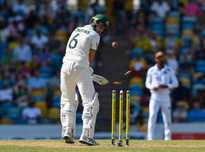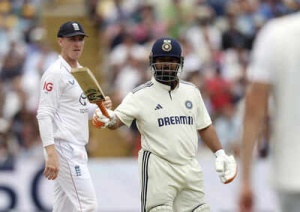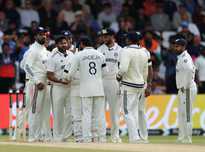When Robert Downey Jr. walked onto the screen in 2008’s Iron Man, few realized that Marvel Studios was reshaping not just Hollywood but the very language of global cinema. That film planted the seed of the Marvel Cinematic Universe (MCU) , a franchise built not on standalone blockbusters, but on an interconnected web of characters and stories that promised long-term payoffs.
For over a decade, the MCU seemed invincible. Each film felt like a puzzle piece that snapped into a grander design. The culmination of this strategy came in 2019 with Avengers: Endgame, which drew global audiences into a collective moment of pop-culture catharsis. By then, the cinematic universe model had become Hollywood’s most envied formula.
Thunderbolts Exclusive: Director Jake Schreier Hails Sebastian Stan & Florence Pugh, Discusses MCU Future
But after Endgame, even Marvel began to wobble. Phase Four and parts of Phase Five have struggled with tonal inconsistency, lack of strong villains.Films like Eternals, Ant-Man and the Wasp: Quantumania, Captain America: New World Order and even Thor: Love and Thunder faced muted responses, while The Marvels marked one of the weakest box office runs in MCU history. For a brand that once defined global event cinema, this was an alarming slide.
The response has been drastic. Marvel is now turning back to its most trusted hands the Russo Brothers, architects of the biggest hits of MCU Infinity War and Endgame. In an even bolder twist, Robert Downey Jr., whose Iron Man death had defined the emotional closure of Endgame, is returning in an entirely new avatar: Doctor Doom with Avengers: Doomsday.
This radical decision underlines the extent to which Marvel is struggling to steady its ship. The company that pioneered cinematic universes is itself battling fatigue, skepticism, and audience indifference.
And if Marvel is faltering, what chance do others have?
Spies: From Soaring Heights to Shaky Ground
The most visible of India’s attempts at world-building has been Yash Raj Films’ Spy Universe. It began with Salman Khan’s Ek Tha Tiger (2012), a slick action thriller that redefined the masala spy film for modern audiences. Its sequel, Tiger Zinda Hai (2017), only cemented the craze, pulling in record numbers at the box office.
Then came War (2019), which introduced Hrithik Roshan and Tiger Shroff to the universe. Stylish, muscular, and laced with high-octane stunts, War gave the Spy Universe a genuine international flair. By the time Shah Rukh Khan’s Pathaan (2023) stormed theaters with cameos linking it to Salman’s Tiger films, the universe seemed unstoppable.
But the next phase has been more turbulent. Tiger 3 (2023), despite being mounted on a massive scale and banking on Salman-Katrina nostalgia, did not meet expectations. The much-awaited War 2 has similarly faced skepticism; while it still has star power in Hrithik Roshan and Jr. NTR, industry chatter suggests the franchise is straining under the weight of repetition.
All eyes now turn to Alpha, the female-driven entry starring Alia Bhatt, Sharvari, and Bobby Deol. Positioned as a game-changer, it also carries immense pressure: one misstep could throw the universe’s momentum off course entirely. The Spy Universe’s problem is clear what began as fresh, adrenaline-charged storytelling is dangerously close to being formulaic.
The Cop Universe
Rohit Shetty has long thrived on spectacle, but his decision to interlink his police-drama blockbusters was a clever gamble. It began innocuously with Singham (2011), Ajay Devgn’s roaring cop drama and also had it’s sequel . Seven years later, Simmba (2018) brought Ranveer Singh into the fold, merging masala action with Shetty’s comic touch which had a cameo by Ajay Devgn as Singham thus bringing it under the Universe gambit. Sooryavanshi (2021), headlined by Akshay Kumar, formalized the “Cop Universe” as both Ajay and Ranveer were part of it culminating in a finale that staged crossover cameos more common to comic books than Bollywood.
By the time Singham Again (2024) rolled around, Shetty had an Avengers-like ensemble at his disposal: Ajay, Akshay, Ranveer, Kareena Kapoor, and new additions Deepika Padukone and Tiger Shroff. Expectations were sky-high. Yet the film, while commercially safe, lacked the cultural eruption Shetty hoped for. Audiences complained of déjà vu predictable villains, overlong action set pieces, and dialogue that leaned more on nostalgia than novelty.
The Cop Universe isn’t dead, but it faces the same trap as the Spy Universe: escalating scale without evolving storytelling.
The Horror-Comedy Universe:
Dinesh Vijan took a different route. Rather than spies or cops, he leaned into folklore and laughter. Stree (2018), starring Rajkummar Rao and Shraddha Kapoor, was both hilarious and chilling, a rare Bollywood horror-comedy that clicked with audiences and critics alike. It became an instant cult classic and a springboard for a shared universe.
Bhediya (2022), starring Varun Dhawan, experimented with werewolf mythology. Though innovative, it received a mixed response. Munjya (2024) fared better, drawing on Maharashtrian folklore with enough humor to win family audiences and with Stree 2 the film created box office magic.
But sustaining a horror-comedy universe isn’t easy. Unlike action franchises, this one depends heavily on freshness and cultural references. Vijan ambitiously announced an eight-film slate including Thama with Ayushmann Khurrana and Rashmika Mandanna readying for release on Diwali. But it’s other projects be it Shakti Shalini with Kiara Advani and another with Alia Bhatt are currently on hold.
The Lokesh Cinematic Universe:
Among India’s cinematic universes, perhaps the most talked-about is Lokesh Kanagaraj’s Lokesh Cinematic Universe (LCU). Rooted in Tamil cinema, it began with Kaithi (2019), a gripping action drama about a convict drawn into a drug war. Lokesh then expanded the universe with Vikram (2022), starring Kamal Haasan, which became a cultural phenomenon. By interlinking characters across films Karthi’s Dilli, Kamal’s Vikram, and Suriya’s terrifying cameo as Rolex the LCU generated genuine excitement.
However, its momentum wavered with Leo (2023). Despite Vijay’s star power, the film polarized fans, some praising its ambition while others criticized its uneven screenplay. With more films planned, Lokesh faces the delicate balance of keeping audiences invested without overcomplicating the mythology. Unlike Hindi cinema’s universes, the LCU benefits from a strong fan base in the South, but sustaining coherence will be its biggest challenge.
Why Universes Are Cracking
So why are these cinematic universes, once touted as the future of storytelling, showing cracks? The novelty of interconnected storylines has worn off, leading to formula fatigue, with audiences now demanding freshness rather than just bigger ensemble casts. At the same time, over-expansion with studios announcing massive multi-film slates—often backfires when delays and underwhelming entries hurt credibility. Another major issue is the dependence on stars; unlike the MCU, which built characters alongside its actors, Indian universes lean heavily on star power, making the entire brand vulnerable if a single film underperforms. Adding to this is inconsistent quality, where one film might click (Pathaan, Stree) while the next stumbles (Tiger 3, Bhediya), leaving audiences uncertain about investing emotionally in the long run. Finally, the challenge of cultural specificity means that while Marvel had the advantage of decades of comic lore, Indian universes often rely on local folklore or masala templates, which limits their elasticity and long-term adaptability.
Cinematic universes aren’t going away anytime soon. They offer brand recognition and guaranteed buzz. But survival will depend on evolution. For India’s filmmakers, the lesson is clear: scale isn’t enough. Each film must stand on its own while enriching the larger narrative.
Marvel itself has realized this the hard way so much so that it has pulled back the Russo Brothers and even resurrected Robert Downey Jr., now stepping into the role of Doctor Doom, in an effort to reignite fan passion. That a studio once considered invincible is scrambling for fixes should be a warning sign for everyone else attempting the same model.
The universes may be showing cracks, but cracks don’t always mean collapse. Sometimes, they are reminders that even the grandest cinematic worlds need solid foundations and above all, stories that audiences truly care about.
Select The Times of India as your preferred source on Google Search.
 Patience Urged for Australia's Rebuilt Top Order Amidst Test Transition
Patience Urged for Australia's Rebuilt Top Order Amidst Test Transition
 Kohli's Composure Under Pressure: Sharma Credits Mental Fortitude for Key Innings
Kohli's Composure Under Pressure: Sharma Credits Mental Fortitude for Key Innings
 West Indies Coach Daren Sammy Fined, Reprimanded for Umpire Criticism
West Indies Coach Daren Sammy Fined, Reprimanded for Umpire Criticism
 Bangladesh Coach Phil Simmons Leaves Sri Lanka Tour for Medical Check-up in London
Bangladesh Coach Phil Simmons Leaves Sri Lanka Tour for Medical Check-up in London
 Rishabh Pant: Greg Chappell Hails India Star as Cricket Revolutionary
Rishabh Pant: Greg Chappell Hails India Star as Cricket Revolutionary
 Pant's Fearless Hitting vs. England Draws Adam Gilchrist Comparisons From Greg Chappell
Pant's Fearless Hitting vs. England Draws Adam Gilchrist Comparisons From Greg Chappell
 IND vs ENG, 2nd Test: Rishabh Pant's Composed Reply Silences Harry Brook's Sledge About Fastest Century
IND vs ENG, 2nd Test: Rishabh Pant's Composed Reply Silences Harry Brook's Sledge About Fastest Century
 Neeraj Chopra Tips Jasprit Bumrah for Javelin Success, Cites Cricketer's Strength and Fitness
Neeraj Chopra Tips Jasprit Bumrah for Javelin Success, Cites Cricketer's Strength and Fitness
 Gambhir Backs India's Lower Order Despite Headingley Test Collapse, Cites Costly Dropped Catches
Gambhir Backs India's Lower Order Despite Headingley Test Collapse, Cites Costly Dropped Catches
 Carlsen on Gukesh's World Champion Status: 'Impressing Me Still a Question'
Carlsen on Gukesh's World Champion Status: 'Impressing Me Still a Question'